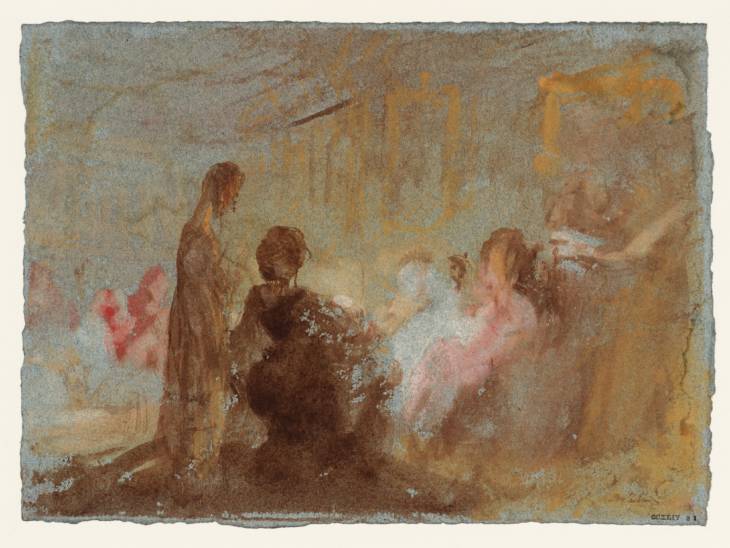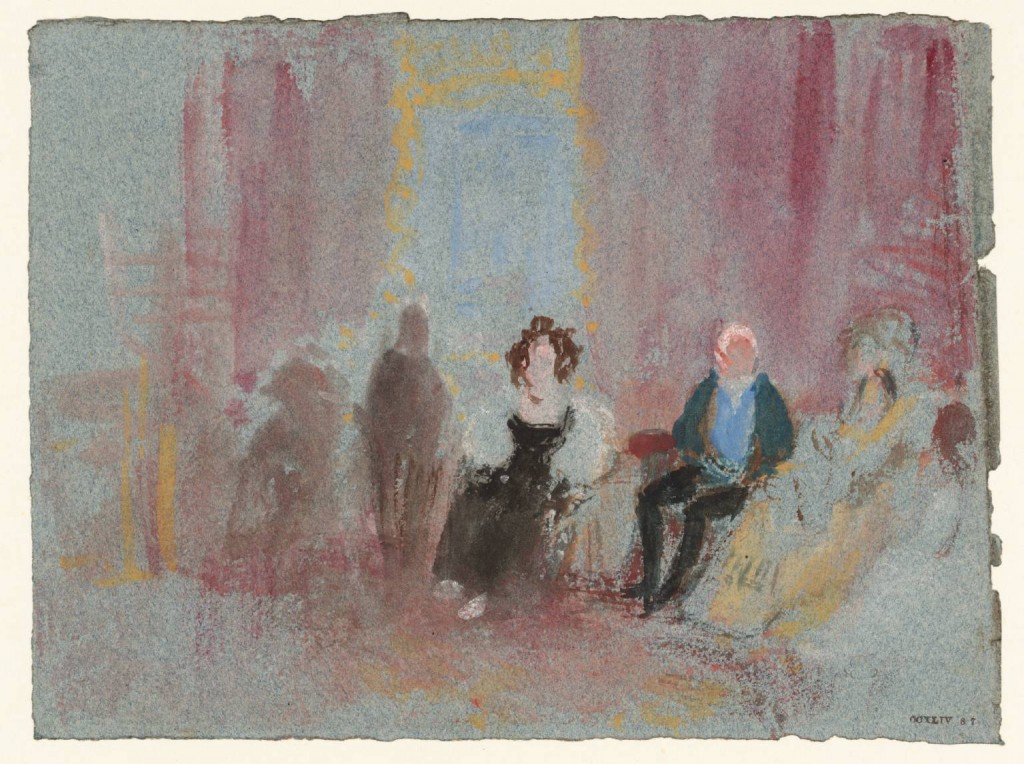Lord Egremont and JMW Turner. Eccentric responded to eccentric. Beneath the social carapace, painter and patron were human beings of much the same stamp: both shy, proud, and farouche, both impatient and accepted codes- Egremont bcause he was an aristocrat born, Turner because he was a man of genius. Each framed his own laws and went his individual way. Thus the nobleman, who had refused to marry a bebutante, lived for many years in domestic concubinage with an unpretentious young woman called Miss Iliffe. Some beleived her father was a cleryman, others that he was a farmer; and it was said she had lived under Lord Egremont’s protection since the age of fifteen. But she had adopted his family name, was known as “Mrs. Wyndham,” lived at Petworth- though she did not dine with her lover when he entertained important persons- and bore him six illegitimate children, three sons and three daughters, who, unlike their retiring mother, seem to have attended all his parties.

---Chatting with the Ladies 1827 Joseph Mallord William Turner 1775-1851 Accepted by the nation as part of the Turner Bequest 1856 http://www.tate.org.uk/art/work/D22747---
Mrs. Wyndham, too, was interested in the arts; and among the artists she encouraged was the wild visionary William Blake. Alas, the time came when Lord Egremont at length announced that he would marry her. The result was tragic; she grew unreasonably jealous. Marriage was soon followed by separation; and she was dismissed to occupy a comfortable house in London.
Meanwhile visiting artists continued to come and go, often with their wives and families. Petworth, wrote the celebrated diarist Charles Greville, resembled in its heyday “a great inn. Everybody came when they thought fit , and departed without notice or leave taking.” Lord Egremont had a horror of farewell ceremonies and merely expected that his visitors should enjoy themselves. “Live and let live,” observed Haydon, appeared to be his motto” “At breakfast… in walks Lord Egremont; first comes a grandchild whom he sends away happy. Outside the window moan a dozen black spaniels, who are let in, and to them he distributes cake and comfits… After chatting with one guest, and proposing some scheme of pleasure to others, his leathern gaiters are buttoned on, and away he walks…”

A Conversation Group 1827. ---...Turner's visit to Petworth in 1827. This grand country house, to the south-west of London, was the principal home of Lord Egremont. He was a wealthy patron of contemporary art, who allowed artists to use Petworth as an open studio. The vivid impressions preserved in Turner's drawings show the relaxed nature of social gatherings at the house. Some focus on the intimacies of the bedrooms. These suggest either that Turner overstepped the bounds of decency, or that he delighted in creating fantasies about his fellow guests. ---Read More:http://www.tate.org.uk/art/artworks/turner-petworth-housefigures-in-the-white-library-possibly-lord-egremont-d22749
But his restlessness was always remarkable, whatever the company and wherever he happened to be. “He never remained,” said Greville, “for five minutes in the same place, and was continually oscillating between the library and his bedroom, or wandering about the enormous house in all directions; sometimes he broke off in the middle of a conversation on some subject which appeared to interest him and disappeared, and an hour after, on a casual meeting, would resume it just where he had left off.”
Physically an imposing personage, with a large head and handsome, high nosed Roman features that suggested a more patrician version of Turner’s rugged aquiline mask, Egremont had a correspondingly impressive mind- an “acute understanding,” declared the diarist Thomas Creevy, and “much more knowledge than he chooses to pretend to, and which he never discloses but incidentally, and, as it were, by compulsion. Simplicity and sarcasm are his distinguishing characteristics.”
This was in 1828. He did not die until 1837, and in 1832, when he celebrated his eighty-first birthday, we learn that he was “still healthy, with faculties and memory apparently unimpaired”; while in 1834 he gave a memorable fete for six thousand of the poor from surrounding areas, who sat down to feast at an al fresco banquet on mountains of plum puddings and “innumerable joints of boiled and roast beef.” Nothing could have exceeded their host’s enjoyment as he rode round among the crowded tables. According to Greville, who was among those present, it was “one of the gayest and most beautiful spectacles” that he had ever seen.

Petworth House:Figures in the White Library, possibly Lord Egremont 1827 Joseph Mallord William Turner 1775-1851 Accepted by the nation as part of the Turner Bequest 1856 http://www.tate.org.uk/art/work/D22749








 COMMENTS
COMMENTS



